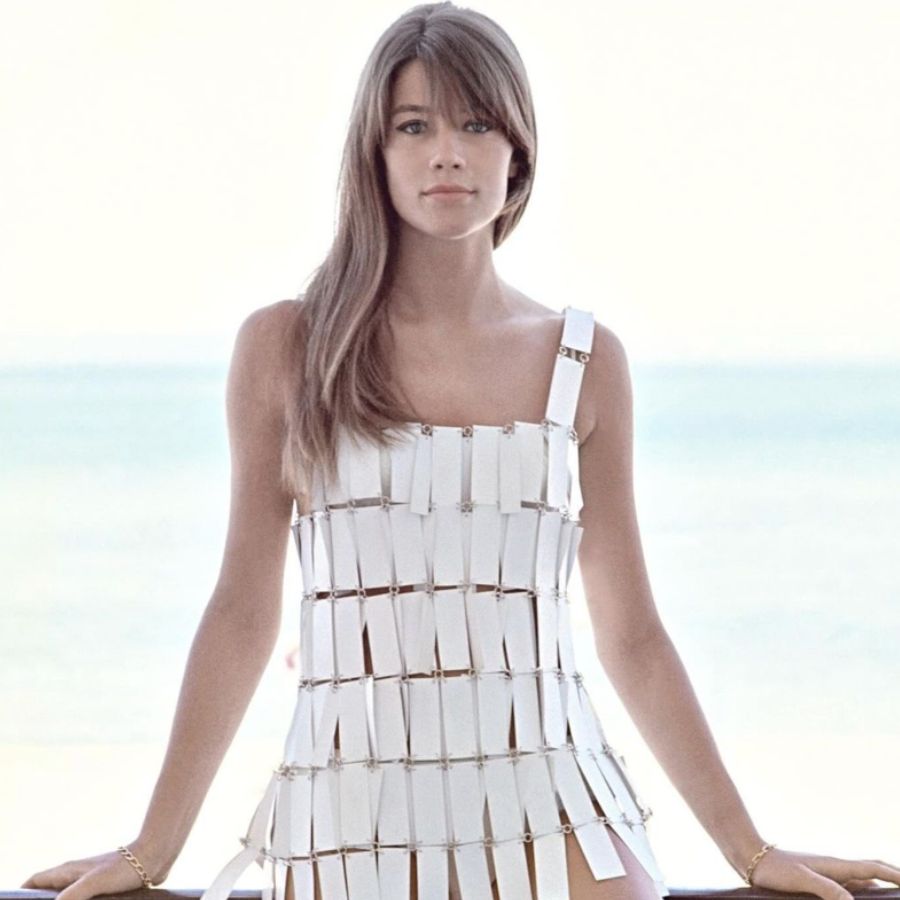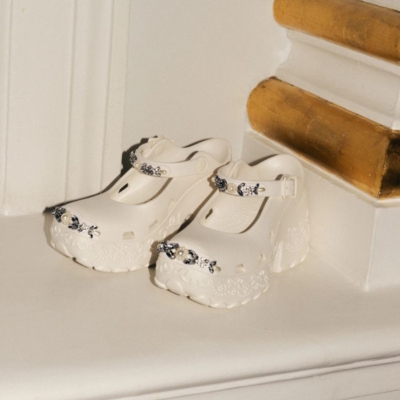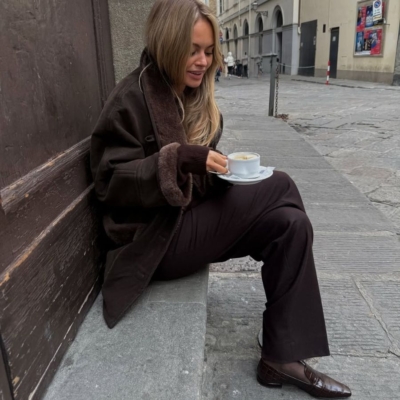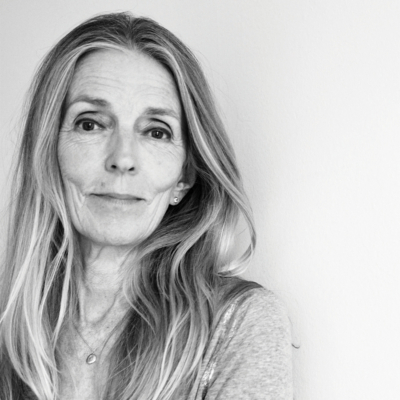French singer-songwriter – and fashion muse – Françoise Hardy, who has died aged 80, leaves behind a legacy of style …
Françoise Hardy may have been too talented to be an It girl (by definition, an It girl is famous for doing nothing other than being fabulous), but she certainly represented the most positive part of that moniker throughout her decades-long career. The melancholic singer-songwriter, and 1960s pop star, had a gentle presence and an easy sense of dress that has long been the blueprint for good style. It wasn’t just the kind of aesthetic usually talked about in typical French fashion terms: ‘effortless’, ‘laid-back’, ‘eclectic’, ‘carefree’. In truth, she embodied all of those things, but it never appeared premeditated or trite.
A photo of Hardy at the Grand Prix in 1966 in a trench coat with check lining and bold, white sunglasses wouldn’t look out of place in a Sézane collection in 2024. A promotional image of her atop a motorcycle in 1969 saw her wear all leather; biker trousers, heeled boots, a patent-look jacket: the embodiment of a swinging sixties mood and the yé-yé (French pop music) genre she would quickly outgrow. She held her own next to Mick Jagger: her in masculine-feminine pinstriped suiting, Jagger in rugby stripes. Indeed, Hardy was a muse to Jagger and Bob Dylan, and was admired by staple of the punk scene Malcolm McLaren. In her latter years, she wore a crisp white blazer with aplomb (although, I confess I didn’t follow her style as much in later life: which says everything about how fashion fetishises youth, and how compliant we are in the problem). Although perhaps the most wearable – and favoured look – of Hardy’s is a simple white jeans and white slogan T-shirt combo: the most rarefied outfit when done well.
Why was her style so sought after? Although she started out as a bubblegum pop singer, Hardy did the undone look very well. Drawing comparisons to other French style icons such as Jane Birkin (although Birkin was British born), she was perhaps the less iconised of the two – and retained more novelty. From fisherman knits and striped Sonia Rykiel knits, to the eye-grazing fringe she sported, perhaps the pinnacle of this was when she was dressed by Paco Rabanne in the designer’s now iconic metallic chainmail minidress (a version of which was replicated in the brand’s high street collaboration with H&M last autumn). In fact, it was when she dressed up that Hardy looked the most irreverent: even in glittering golds she kept her long hair undone and her makeup fuss-free, a high-low contrast often replicated by contemporary style icons such as Alexa Chung (not a mermaid wave in sight).
Hardy graced the cover of magazines such as Vogue and Paris Match, she wore miniskirts, flared trousers, louche shirting, fur coats that stretched towards the floor and her trademark newsboy cap (could Chemena Kamali revive these at Chloé? Possibly). She was photographed by Richard Avedon, David Bailey and William Klein. Seminal Japanese designer Rei Kawakubo named her clothing line Comme des Garçons after a line in a Françoise Hardy song.
Not only a style icon fetishised by millennials pinning to French girl inspiration boards – which, no doubt, will only ratchet to a fever pitch in the wake of her death – Hardy struck the rare balance of also being admired in her own time. “I was passionately in love with her,” recalled David Bowie, “every male in the world, and a number of females, also were.”











